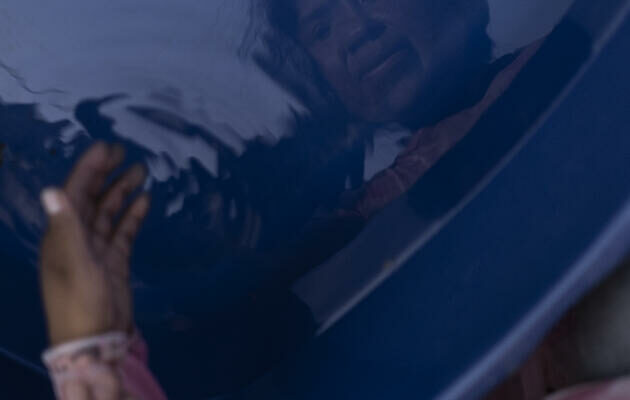It’s barely 9 a.m. in the Peruvian capital and the mercury is already 26°C at the start of March, in the heart of the southern summer. Brigida Yana Condori, in her thirties, pauses, mopping her temples as she climbs the row of stairs that takes her home, high up in the Villa Maria del Triunfo neighborhood, on the outskirts of Lima. In the courtyard of her house, she lifts the lid of the tank containing her water reserves for the month: 1,100 liters, which she must share with her two children – they are aged 4 and 11 – and her brother.
Around her are buckets: one for cooking, one for washing. Wastewater is reused for cleaning. There is no question of losing a single drop. “Welcome to the paradise” (” heaven “), the name of his asentamiento (“urban settlement”), exclaims this resident in a burst of laughter. A cleaning woman “in town”, she lives in a small house made of planks. His neighborhood is not connected to the drinking water distribution system managed by the public company Sedapal. “Pretty miserable, our paradise, right? »she says with a smile.
For her supply, she depends on her neighbors from whom she buys water, a stone’s throw away, below, or on the random passage of the tanker truck. The price charged by the latter is nevertheless prohibitive: up to ten times more expensive than piped water.
Another worry is weighing on her at the moment: the spread of dengue fever, which is proliferating throughout Latin America. Nearly 1.9 million cases have been recorded. In Peru, a state of emergency has been declared in around twenty departments, including Lima. Brigida knows that storing water is not ideal. “My 4-year-old son gets stung, but you need water to live. We would love to benefit from a water and drainage project. As the State says, it is a right that every Peruvian has. But, to us, it doesn’t seem to apply. »
Lack of sewerage
The water problem in Lima primarily affects the peri-urban areas of the capital. On the hills surrounding the city center lies a vast precarious habitat, made of sheets and boards, and crossed by a maze of stairs and stony dirt paths. There is no sewerage here or sometimes even electricity. In the distance, to the west, the Pacific Ocean can be seen behind a cloud of smog. To the east, the first mountains of the Andes cordillera can be seen.
You have 74.82% of this article left to read. The rest is reserved for subscribers.
